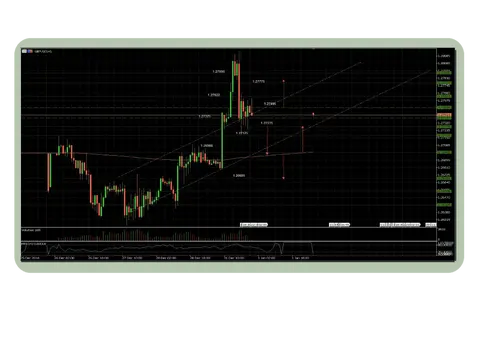Our partner, XM, lets you access a free demo account to apply your knowledge.
No hidden costs, no tricks.

All of us are making plans for different reasons. Some of us think about what to have for dinner, others shop for winter clothes to be prepared for bad weather. We do all of these not because we need them right now, but to guarantee some kind of comfort in the future.
You might be thinking, what does this have to do with Forex trading? Whenever people trade Forex, they are employing different types of strategies to limit their potential future losses. One of those strategies is the hedging strategy.
Hedging in Forex is typically a long-term strategy that aims at reducing losses by opening one or more positions, thus offsetting already existing ones.

The concept behind hedging is not to eliminate the risks altogether, but rather, to limit the impact of these risks on your trading. Two of the most common methods of hedging are Direct and Correlation hedging.
But what are they, and how do they work? We are going to discuss that and more in today’s guide. So, follow our detailed guide and learn how to use a hedging strategy for the best outcomes in your Forex trading journey.
Forex hedging allows traders to offset the risks associated with currency trading. The Forex trading market is known for its volatility and ever-changing prices. While many view volatility as something they can profit from, it is also associated with some risks.
Learning how to hedge in Forex can be helpful for traders who want to avoid risks, without having to close out their positions. Hedging in the FX market works in a very simple manner. It relies on opening a position, or multiple positions, in a different direction from your initial order. The general idea behind this strategy is to profit from the amount of money that the new position is making in order to offset the losses that you are taking from the losing ones you opened initially.
While talking about hedging, it is important to note that it is not a profit-making strategy. Rather, it is aimed at protecting traders from losses.
Forex hedging is usually done using spot contracts, Forex options, currency futures, and CFDs.
Adverse market conditions, such as changing interest rates or inflation can lead to traders using hedging strategies to ensure they are minimizing the impact of such events.
One could argue that using this strategy instead of simply closing your positions is not necessary. However, very frequently, traders simply want to keep their positions open, expecting them to make a profit in the near future while ensuring that they don’t lose too much money while waiting for the market to turn in their favour.

We have already discussed the meaning of hedging in Forex, but what are the different types of hedging that traders can use?
No matter which one you choose to use, you should be knowledgeable enough about both of them. Below, we will discover how each of these types of hedging techniques works to help you decide which one is a better fit for you.
Keep in mind that the availability of hedging also depends on the broker you are using. Some brokers do not allow for this strategy, or only offer either of the above-mentioned two types and some broker fees may reduce potential profits when employing them.
The first technique that we are going to discuss is the direct Forex hedge strategy. This type of hedging is very simple to understand and is used when traders already have an open position on a certain currency pair.
This type of hedging is done by opening an opposite position on the same pair. For example, let's say that you are trading the EUR/USD currency pair, and you see that the market is not going as you have anticipated.
You see that your initially opened position is causing you losses, but you don't want to close it just yet, as you believe that the market is going to eventually take your anticipated direction. To avoid losing too much money and somehow make up for the losses that you are incurring, you would simply open a short position (if you had a long position opened) with the same trade size on the same pair.
Depending on the costs of opening each of the positions, the outcome can be either a net profit or a loss of zero. Without a direct hedging Forex strategy, you would be left without many options.
You would either have to just wait for the market conditions to change, or you would have had to simply accept your losses and close the position. With the direct hedge technique, you are able to make money with the second position that you have opened, the aim of which is to cover the losses on the initial position.
However, there are certain drawbacks to this simple Forex hedging strategy. The main disadvantage of this technique is that during the great recession, in 2009, the US Commodity Futures Trading Commission issued new regulatory laws, which banned this practice.
As a result, if you have a long position on EUR/USD opened, and you open a short position on the same pair, the broker is required to close the first position.
Another disadvantage is that while, in theory, this strategy could work flawlessly, the actual experience is a bit different. When trading currency pairs, you are required to pay spreads, which can further increase the money that you have to spend and this can lead to even greater losses.

Another very popular strategy is called correlation hedging. It is a very common thing in the Forex trading market for traders to be seeking a correlation between different currency pairs. This strategy focuses on choosing two currencies in the market that, in most cases, have a positive correlation, meaning that the price mostly moves in the same direction.
After identifying such pairs, traders are opening opposing positions on them. We will discuss a specific example to understand this type of hedge trading strategy a bit better.


A great example of currency pairs having a good correlation is the GBP/USD and EUR/USD currency pairs. The main reason for this correlation between the pairs is the relations between the UK and the EU. It is held as a belief in the Forex trading market that a long position on GBP/USD could be hedged with a short position on the EUR/USD pair.
Another great example of this type of strategy is the GBP/USD and GBP/JPY correlation. In fact, in some cases, the correlation between these two currency pairs reaches above 90 percent, which creates a lot of opportunities to cover losses in the market.
As you can see, this trading technique uses three different currencies and their relationship in terms of price movements. This type of hedge is very frequently referred to as the Forex 3-pair hedge strategy.
Some traders are even using more pairs at the same time, depending on the market conditions.
As we have already mentioned in today’s guide to Forex hedging strategies, there are several different options that Forex traders have to choose from for hedging purposes. In addition to different types of techniques and strategies used for this activity, the actual process is also performed somewhat differently depending on the trader.
For example, one could simply open a regular position of the currency pairs to hedge against the position they had opened previously, but there are other types of assets that can be used for this practice as well. These are special contracts, such as CFDs, Options, and Forex forwards.
One of the most common ways of hedging is using CFDs. Short for Contracts for Differences, they are very popular assets in the market. CFDs can be used for Forex hedging as well as in other markets. Traders are able to use CFDs without taking ownership of any physical assets, which makes using them for hedging a very simple thing to do.
Using CFDs is considered one of the best Forex hedging strategies, as it allows traders to easily go short or long. This strategy sees traders opening a contract with the broker solely based on the price direction the currency pair is expected to take.
Every CFD contract has its deadline. Once the deadline is reached, the contract is closed and if your prediction about the price movements was correct, you are making profits. On the other hand, if your view of the direction that the price would take was incorrect, you will be losing the order and making a loss.
CFDs are one of the best methods to use, due to the fact that they are regulated. However, it is not available for everyone. For example, traders from the US are not able to use this trading strategy.
When it comes to the best hedging strategy in Forex, one option that should be discussed is options trading. This strategy can be a great fit for traders who do not like to have several positions open in the market at once. This strategy lets traders buy or sell currency at a predetermined rate before a specific date.
The option is an agreement and not an obligation. There are two types of options that Forex traders can use, depending on whether you want to buy or sell the currency. These are great tools for hedging as they come with limited risks.
However, keep in mind that traders have to pay premiums for opening an options trade. While you have the opportunity to let the option expire without any additional payments, you will be losing the premium that you had paid initially.
One of the most commonly discussed types of hedging in Forex is using currency forwards, which are very similar to options. Forwards also create a contractual agreement to exchange a currency at a specific price at some point in the future.
However, forwards come with the obligation of fulfilling the contract when it expires. This is the main difference between currency forwards and options.
Much like options, currency forwards also let traders have the opportunity to lock in the price of the asset in advance. Thus, this can be used by traders to better plan their future positions. Also, traders very frequently confuse forwards with futures contracts. While these two are very similar, forwards are over-the-counter products unlike futures contracts, which are exchange-traded.
Like anything else in the Forex trading market, hedging strategies also come with advantages and disadvantages.
While many traders are using this hedging to limit their losses in the Forex trading market, there are others who avoid using it at all as they believe it can have the opposite effect and increase their losses. Below, we will discuss the major advantages and disadvantages of Forex hedging.
In the Forex trading market, a hedging strategy comes with numerous advantages. This technique can be very helpful for Forex traders to find ways to avoid losing money when market conditions are not favorable for their positions.
The main idea behind this strategy is to decrease the impact of adverse market events. Here are the main advantages of the hedging trading strategy in the Forex trading market:
While the above-mentioned trading pros make hedging very popular, there are some traders who are avoiding this strategy altogether. While some of them think it is not effective, others simply do not want to spend additional time on opening new positions. Here are the main cons of hedging:
Our partner, XM, lets you access a free demo account to apply your knowledge.
No hidden costs, no tricks.
No, hedging strategies in Forex are absolutely legal. In fact, it is a very common strategy employed by Forex traders around the world to ensure they can limit the impact of risk on their positions.
While there are some restrictions on hedging in some countries, it is not considered illegal. For example, in the USA, the CFTC restricted using the direct hedging strategy. The regulator said that it was associated with additional risks. As a result, traders from the US are not able to use this type of hedging in Forex. If they try to use it, the broker is required to close the initial position.
FX options are a type of derivatives product that is viewed as one of the best hedging strategies in the market. This is mostly used for short-term hedging as they can expire at any time. This option is not requiring traders to buy or sell a currency pair at the deadline, and it can be simply left to expire. However, when using options, traders are required to pay some commissions, which can act as additional costs for Forex traders.
Hedging strategies in Forex are very good for traders to limit the impact of adverse events on their trading positions. There are many things that can influence the profits that traders make in the Forex trading market and some of the events can cause the prices to take an unfavorable direction. By using Forex hedging, traders are able to limit their losses.
In Forex, hedging techniques work in a very simple manner. The general idea behind this strategy is to open a new position that is the opposite of the position that you are receiving losses on. When things go south in the Forex trading market, traders have a few options to consider. One of them is to simply give up on the position and close it, the second one is to hope for the best and keep the position open, and the third one is hedging - opening a new position (short for long, and long for short) that could cover the losses made on the initial position.